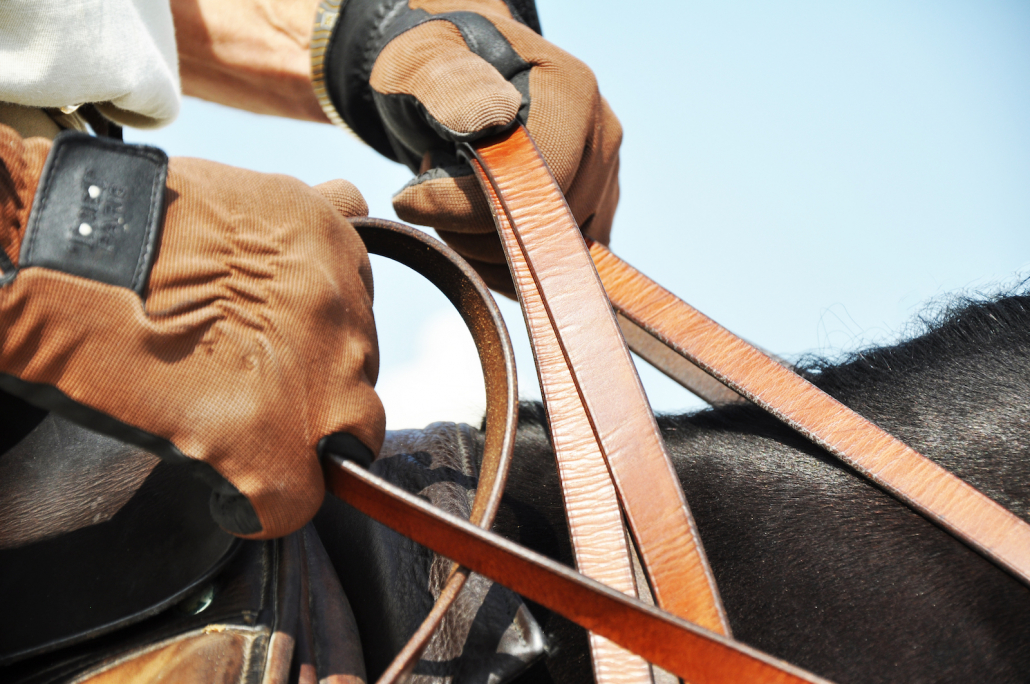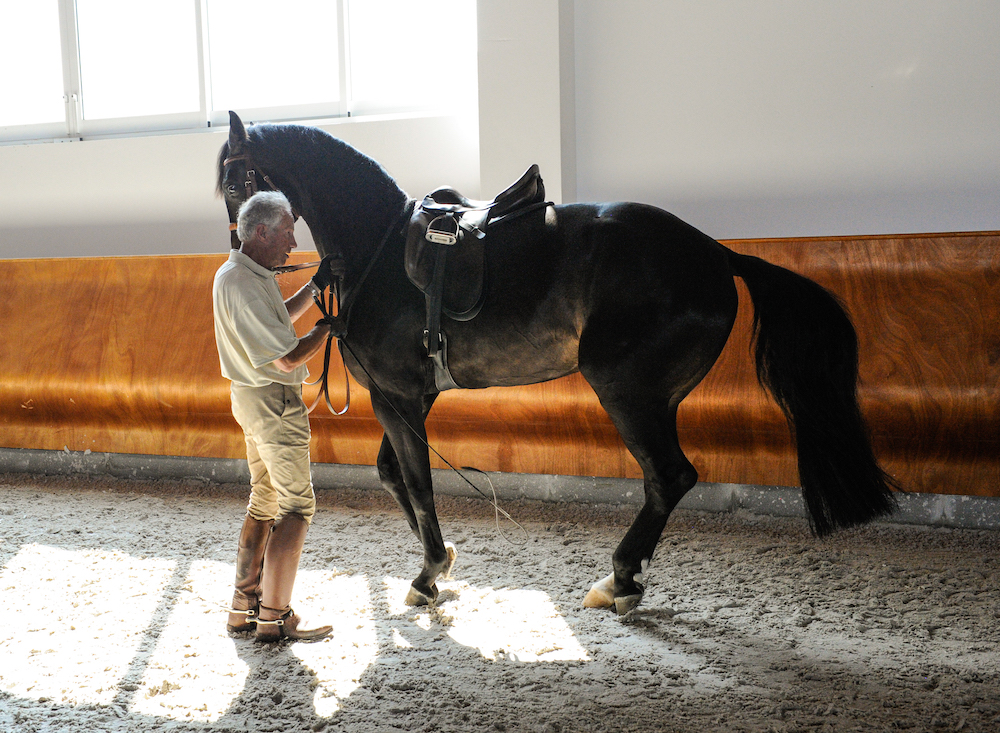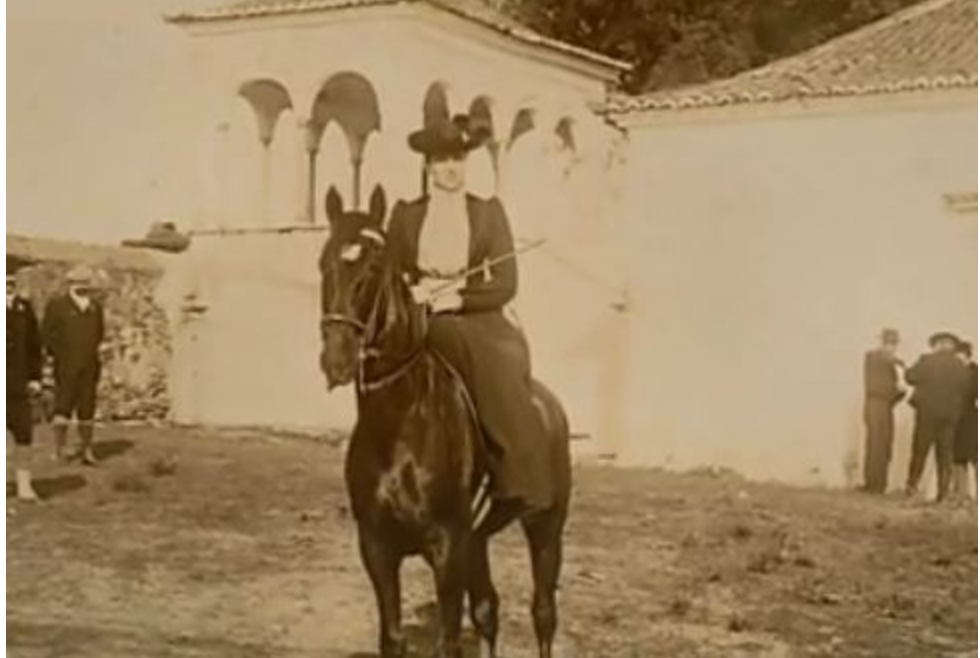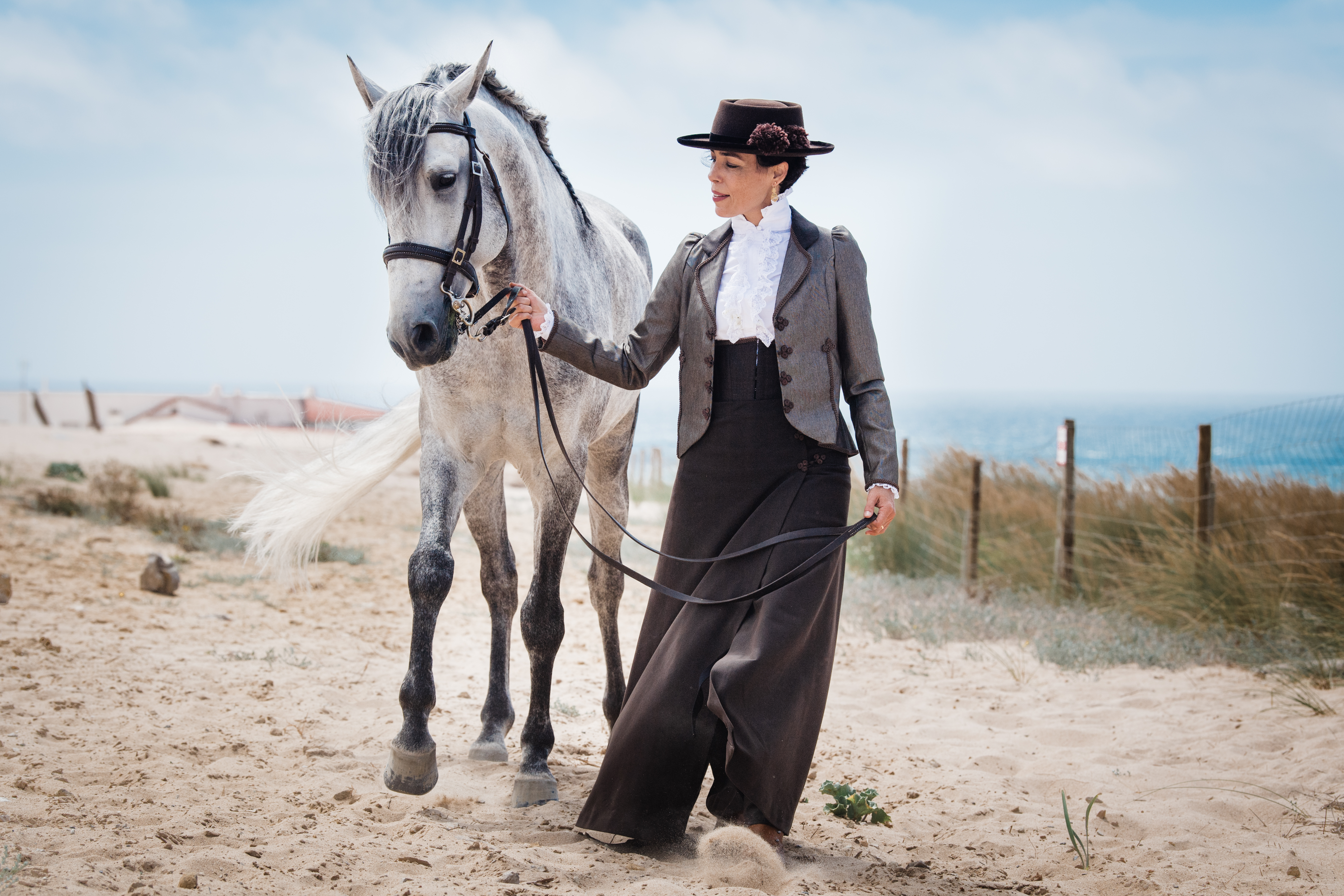Archive for year: 2021
Diablo – A Legend
/in Classical Equitation, Articles, Uncategorised, Frontpage Article/by Teresa BurtonClassic Double Bridle 3:1 Rein Hold
/in Blog, Classical Equitation, Uncategorised, Frontpage Article/by Teresa BurtonThis technique is the oldest method of holding double reins a style used by the Spanish Riding School in Vienna and by many of Germany’s most successful professional riders used it before WWll. It is the –
Classical 3 to 1 method to Holding the Double Reins (3 to 1 Rein Hold)
I first came across this technique when I was watching my dear Friend Master rider Anton Walliser training his and young and GP horses using this method I was fasinated to understand more about it and why he uses it.
How to Hold the Reins Using this Method
The left hand holds three reins, while the right holds only one rein plus the rider’s cane or whip. The correct placement of reins in the left hand is to hold the left snaffle (bridoon) on the outside of the little finger, the left curb rein between little finger and ring finger, and the right curb rein between the ring and middle fingers. The right hand holds the right snaffle (bridoon) rein in the traditional position between the right little finger and ring finger to keep the mouth mobile. The left hand is held more to the center of the horse directly over the withers than off to the left of the withers.

As I understand when using this method it decreases the action of the curb, prevents the rider from riding with their hands too wide and it shows when the horse is not really straight, because the rider can no longer make the rein pressure on one side of the mouth any stronger than the other, since reins from both sides are held in the left hand. The rider must ride off the seat and legs to bend the horse, and the horse must therefore be correctly working“through”.
Also it forces the rider to hold his hands absolutely quiet and encourages a quiet seat as the bending of the horse should be done mainly by the seat. An uneven contact or a crooked horse is easily revealed with this kind of double bridle handling and cannot be hidden by an uneven use of the curb rein.

Anton´s comments in addition to my understanding
“I basically agree with your description of the 3 to 1 method. I find it to be a far more effective method in training horses. 20-30 years ago Swiss and German riders were competing their horses using this way but nowadays I don’t see anyone using it. I think maybe because it is much more difficult to learn than the 2 to 2 method used by everyone today.
Learning it takes a lot of practice and patience but the results speak for them self – horses and riders progress much better. It really helps in training your horse to be straight, you have a much more even contact on the curb, never any sudden movements of jerking the curb. The hands are much more together, much quieter and certainly you are riding far more with seat and legs. The horse bends better round your leg your seat will be quieter. The horses stay lighter and more through. I don’t know where this method started but I think it is sad that it is rarely seen used nowadays because if mastered the technique is far better for horse and for the rider”.
I think it would be interesting to learn this method and certainly if it is gentler for the horse and encourages a better seat it cannot fail to be a bonus!
Anton Walliser is my opinion a true Classical Master and has a fasinating story which you can read part one here
There will be part 2 in his story coming soon as now his young horses are all at PSG and above two competing GP and achieving outstanding results. Anton is a true inspiration keep posted.
Other intersting articles – the Classical Masters and The History of Classical Equitation
Text by Teresa Burton 2 images of reins held by Anton Walliser by Teresa Burton
Image of Anton Walliser working his mare from ground to train piaffe by Lena Saugen photography
Further sources – Wikipedia
#2 Portuguese style – “à portuguesa”
/in Blog, Portuguese Equestrian Heritage, Classical Equitation, Portuguese Artisans - Handmaking Equestrian items, Uncategorised, Frontpage Article/by Teresa BurtonThe History of Fashion
The Portuguese Riding Costume
D. Amélia de Orleães e Bragança
The Feminine Costume
But the traditional Portuguese feminine riding costume has much to say!
It is my belief that the majority of the horsewomen who dress in the Portuguese style prefer a more minimal and contemporary costume, and as a result, the traditional feminine costume with its puffed sleeves was set aside and did not earn a solid place as did its pair.
Costume Evolution
Key Pages
Supporting The Brooke Organisation
 Lusitano Horse Finder is proud to support The Brooke Organisation, an international animal welfare organisation dedicated to improving the lives of working horses, donkeys and mules in some of the world's poorest communities.
Lusitano Horse Finder is proud to support The Brooke Organisation, an international animal welfare organisation dedicated to improving the lives of working horses, donkeys and mules in some of the world's poorest communities.Get in Touch
Teresa Burton
Malveira, Portugal
Tel: + 351 913 175 772
E-mail: teresa@lusitanohorsefinder.com



